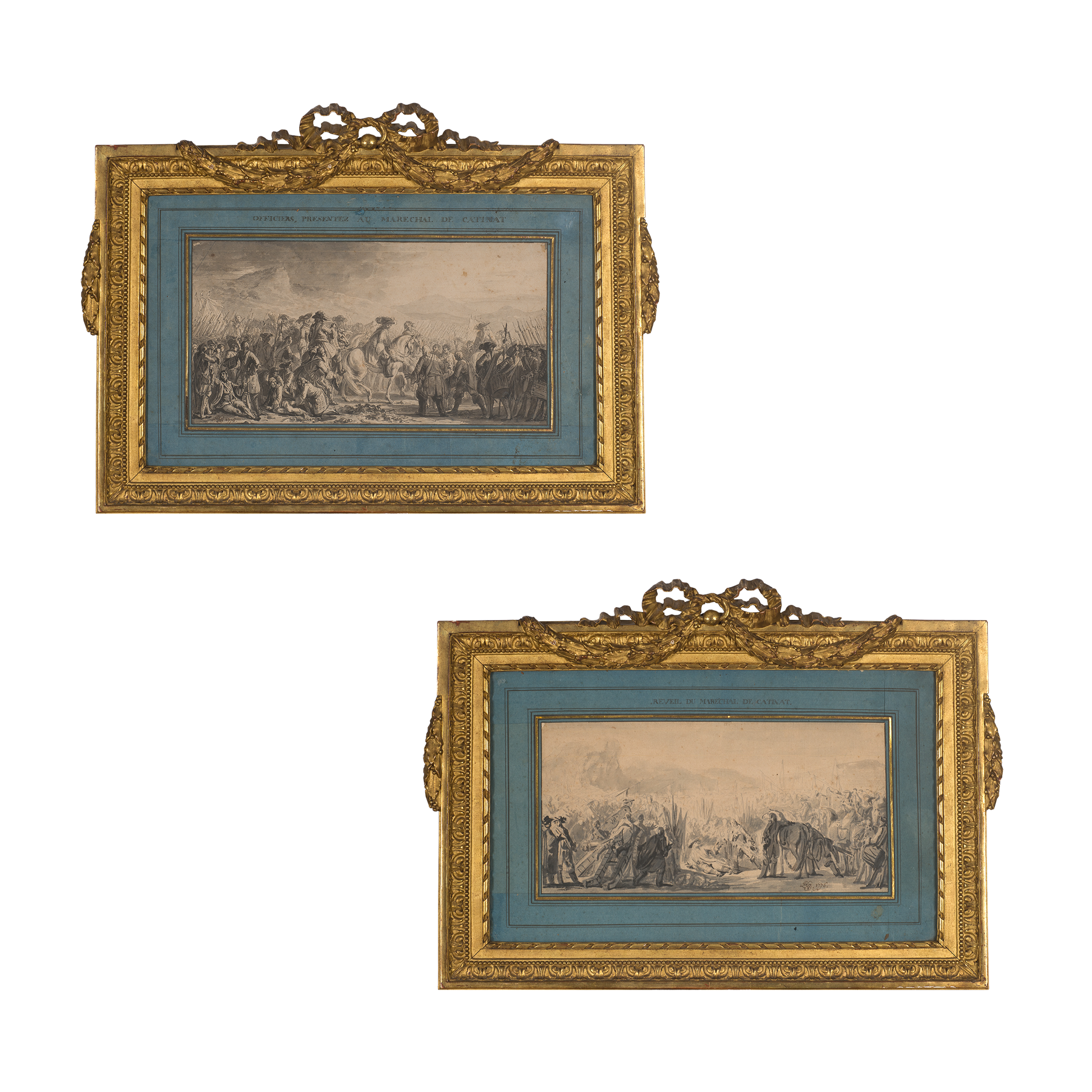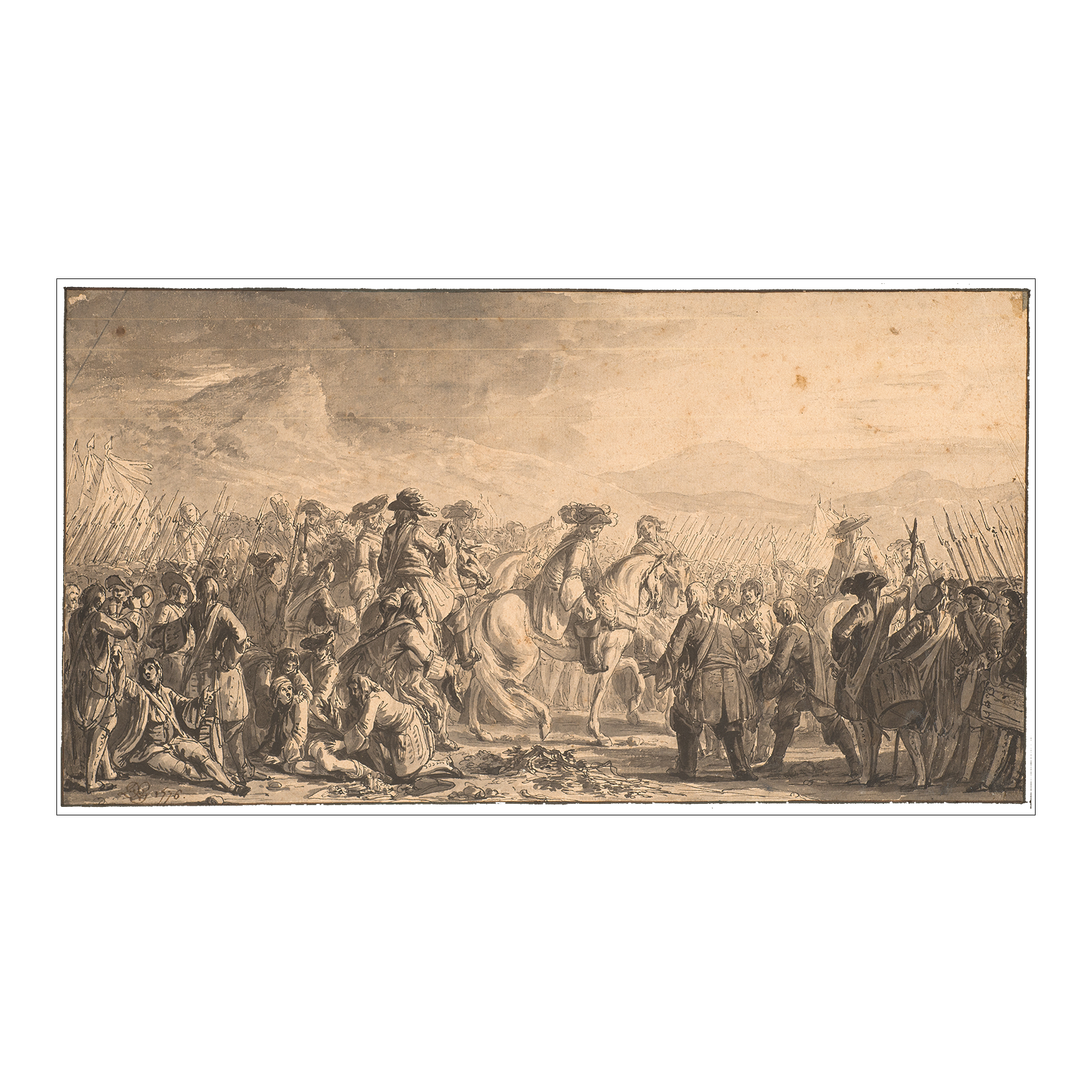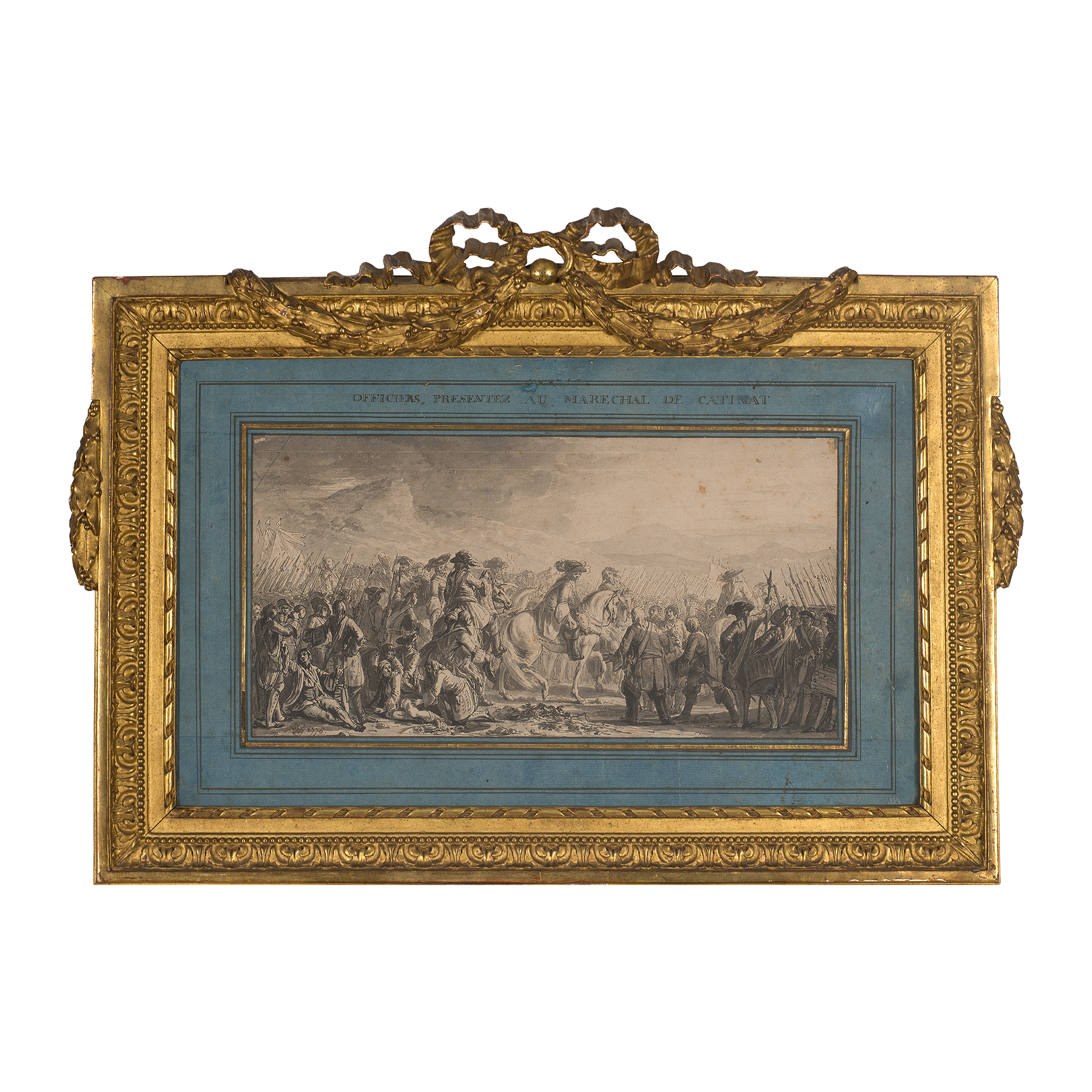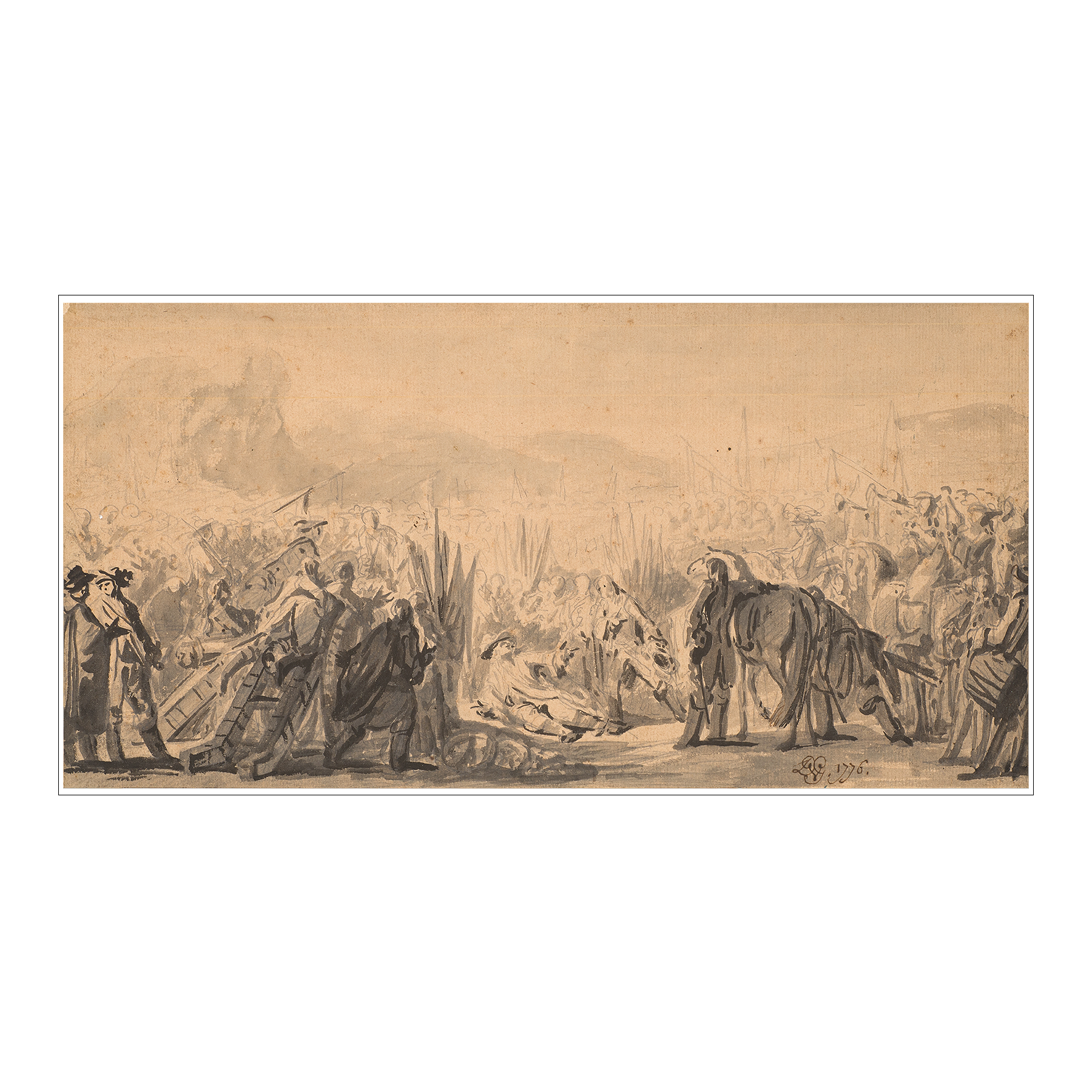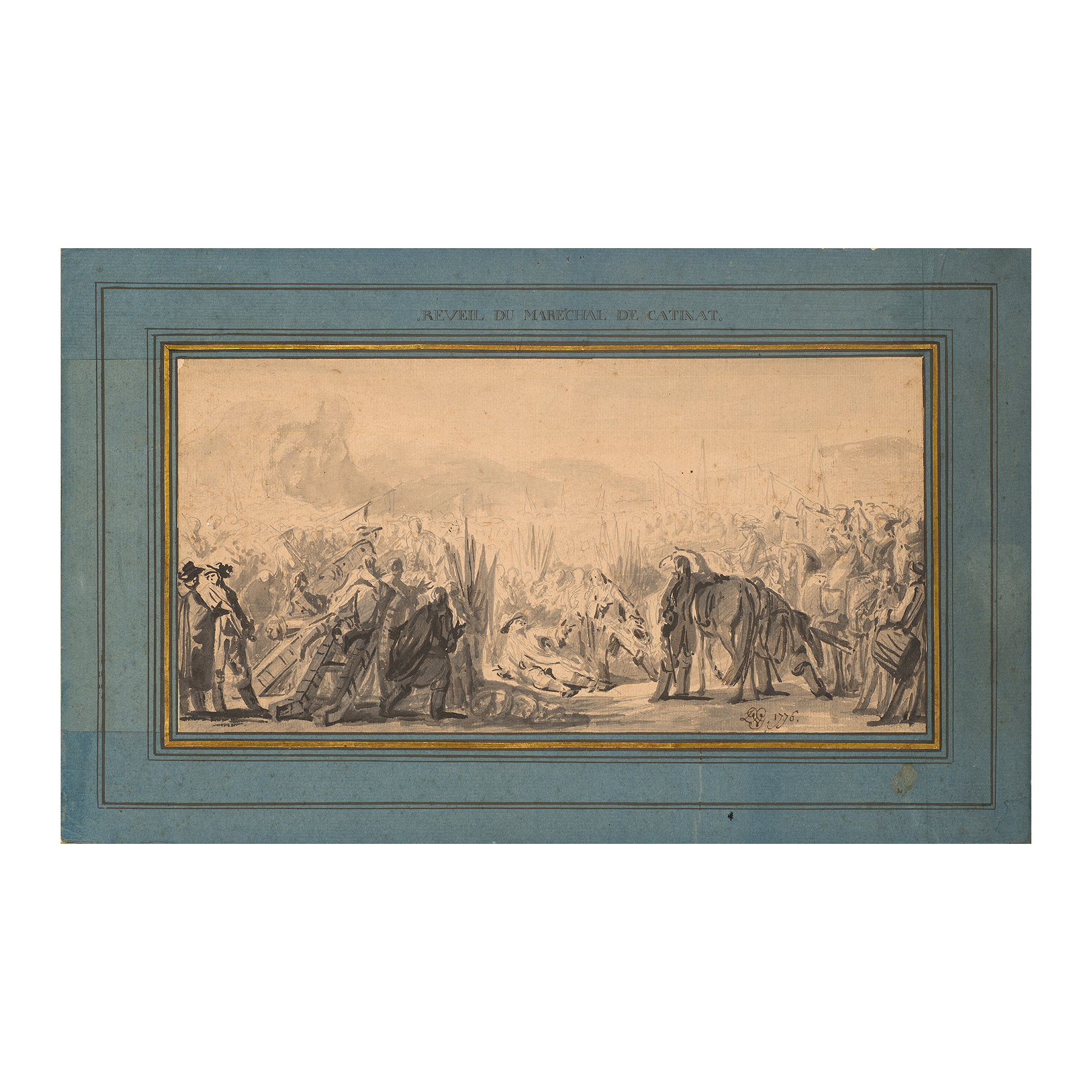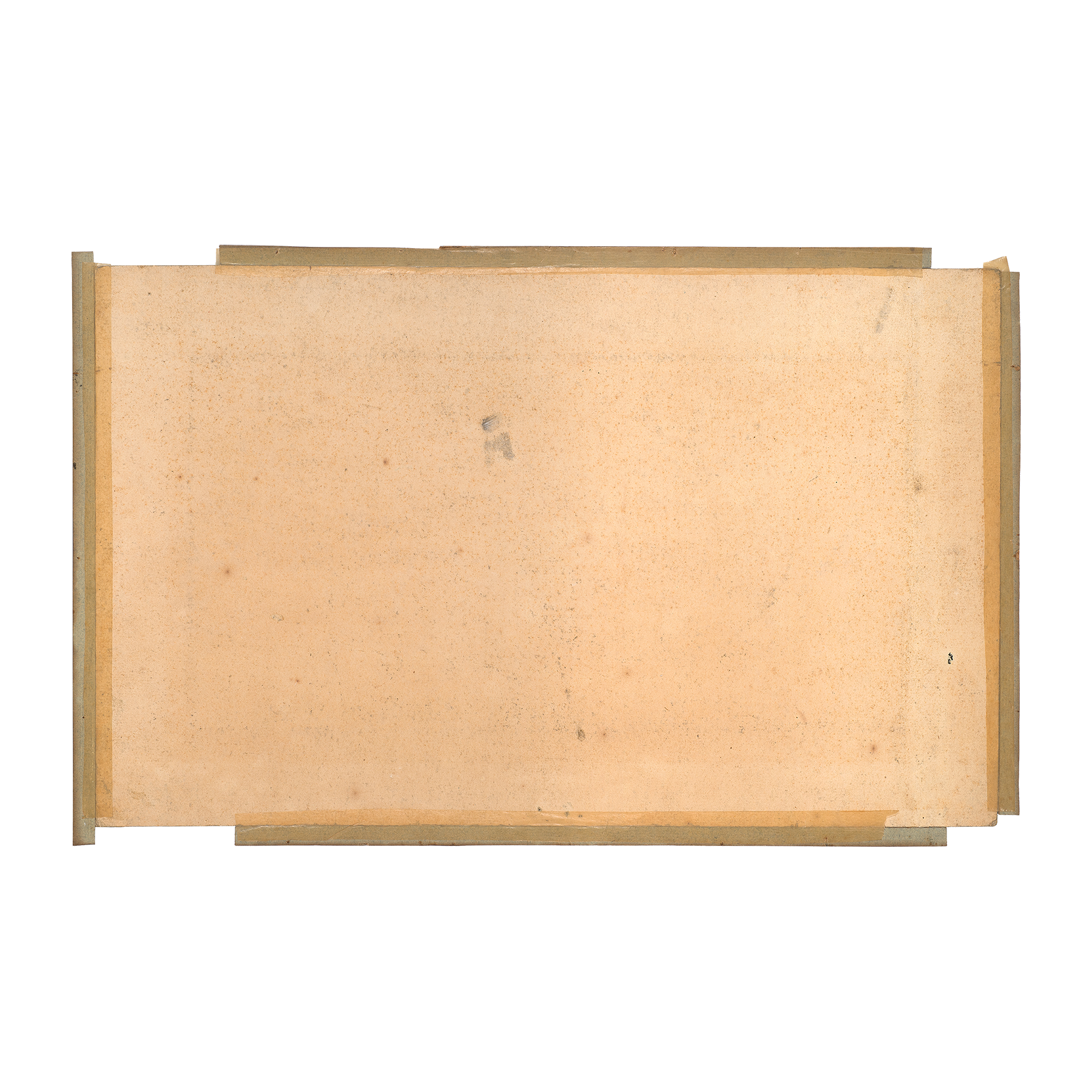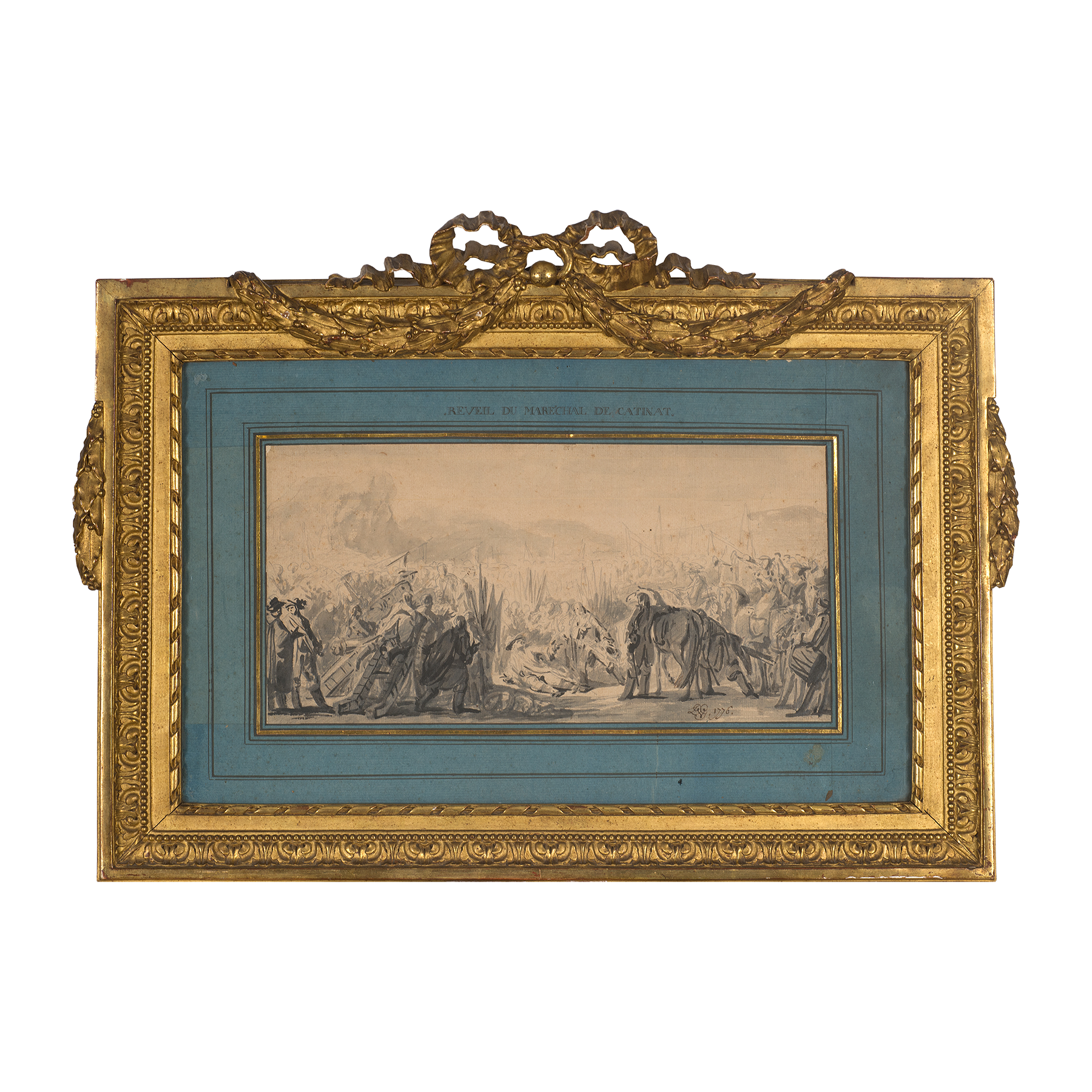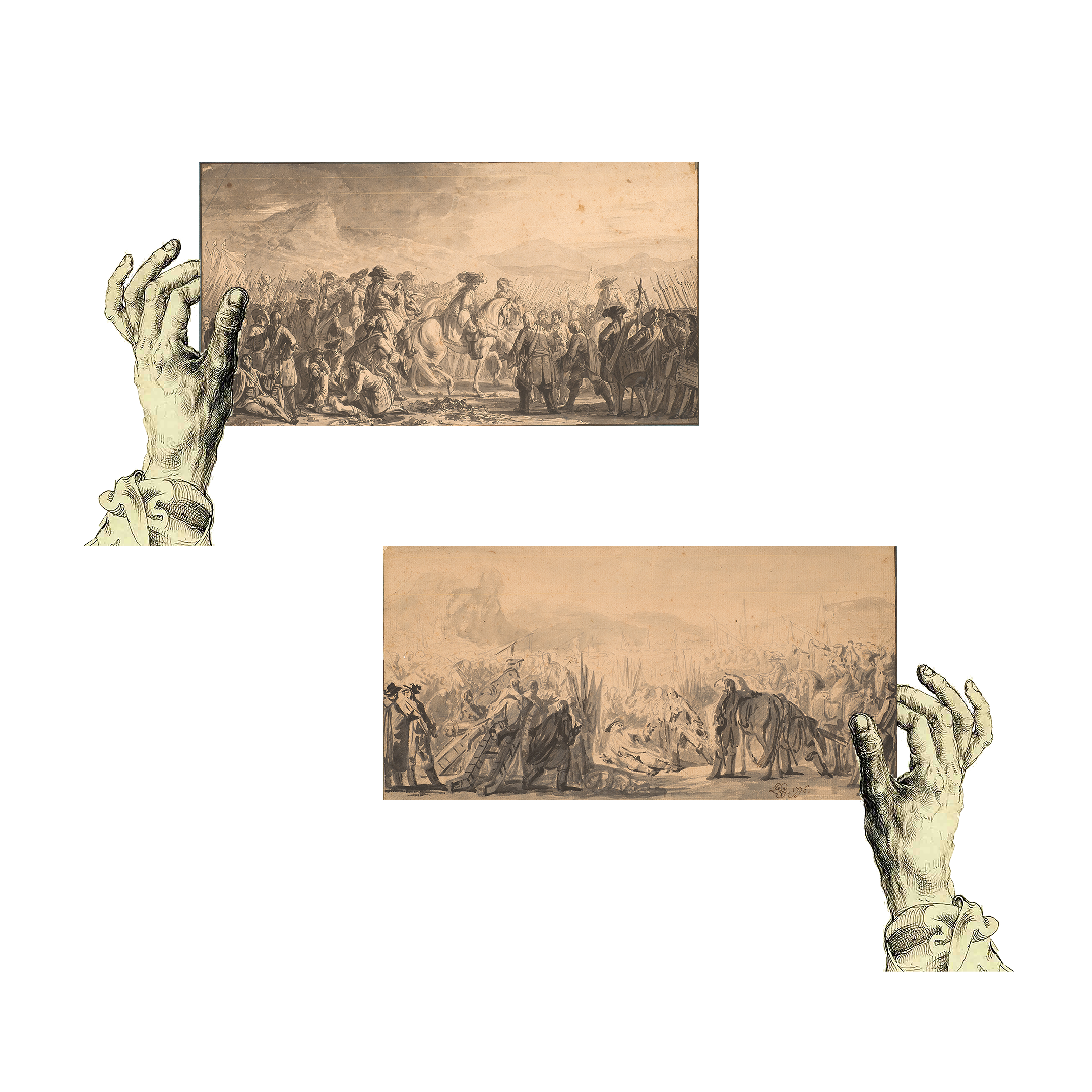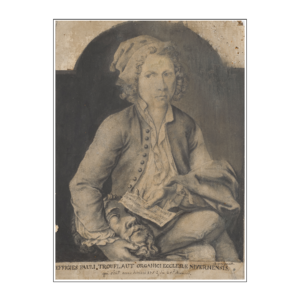Jean Démosthène Dugourc
Versailles 1740 – Paris 1825
- The Awakening of Marshal de Catinat
- Officers Presented to Marshal Catinat
Pen and grey ink with grey wash over pencil marks. Monogrammed and dated 1776 lower right (1) and lower left (2).
175 x 360 mm
Provenance: Paris, Hôtel Drouot, Me Desvouges, May 3rd, 1913, n° 49 (for the “Réveil du Maréchal de Catinat” (The Awakening of Marshal de Catinat); A. Trezel Collection ; Anonymous sale; Paris, Hôtel Drouot, Tajan, March 29th, 2000, n° 74; Paris, Artcurial, June 16th, 2020, n° 48.
Bibliography:Under the direction of Emmanuelle Brugerolles, De l’alcôve aux barricades (From the Alcove to the Barricades), Beaux-arts de Paris éditions, 2016, p. 166, ill. 1.
Though he remains poorly studied today, during his lifetime, Jean Démosthène Dugourc was a veritable celebrity who enjoyed a fruitful and eventful career. Dugourc’s father was superintendent of the Duke of Orleans’ household, so the boy grew up with the Duke of Chartres and benefited from the same thorough education. In 1764, shortly after the spectacular archaeological discoveries of Herculaneum and Pompeii, the Count of Cani took Dugourc to Rome. On returning to Paris, Dugourc worked for some time with the Inspector General of Artillery, Monsieur de Gribeauval who, Anatole de Montaiglon tells us, “associated him with military work for his Valenciennes Government, serving the Royal Corps of Engineers.”[1] But Dugourc did not stay in the post of military engineer for long and, joining forces with his brother-in-law Joseph Belanger, participated in decorating the Bagatelle, Saint-Germain and Maisons-Lafitte chateaux. Appointed bedroom and cabinet designer to Monsieur in 1780 [2], Dugourc became a specialist in theatre sets in France and Europe. His stage sets and maquettes for Brunoy’s theatre were a great success and in 1781 it was to Dugourc that the King of Sweden appealed to design the sets and costumes for the first six operas performed in Stockholm’s newly built theatre.
Dugourc became the must-have creator for every prince’s folly, pavilion or abode; financiers and amateurs courted the artist and snapped up his work. Foreign rulers Paul IV, Catherine II and Charles IV of Spain took turns in trying to attract him to their homes, but most of the time obtained nothing more than blueprints. After being appointed director of sets and costumes for the Opéra in 1783, Dugourc became Supervisor for the buildings of Monsieur and in 1784, designer of the Crown’s Garde-Meuble[3]. During the Revolution, he built wallpaper, playing cards and porcelain factories. In 1799, Dugourc was nominated first architect to the King of Spain. Returning to Paris after the Restoration, he recovered his position at the Garde-Meuble in 1816 and held it until his death. It was Dugourc who designed the throne room at the Tuileries.
These two beautiful drawings deal with events in the life of Marshal Nicolas de Catinat, a remarkable 17th century military leader whose biography Mémoire pour servir à la vie de Nicolas de Catinat (Memoir Dedicated to the Life of Nicolas de Catinat), written by the Marquis de Créquy in 1772, was reprinted in 1774 and 1775. This elegy for Catinat was the subject that received the annual French Academy prize in 1775. Around ten texts recounting significant events in the Marshal’s life were published. Dated 1776, our two drawings constitute part of this renewed interest in the Marshal’s life.
For the first work that bears the inscribed title Réveil du Maréchal de Catinat (The Awakening of Marshal de Catinat), the artist selects an event from the day after the victory of La Marsaille on October 5th, 1693, inspired by precise facts from Count JAH de Guibert’s account: the Marshal spent the night outside and woke up to find flags, trophies and other tokens of victory assembled around him by cheering gendarmes. A second more detailed drawing from one year later is kept at the École des Beaux-arts in Paris (Inv. PM 2561) and is annotated by the artist with extracts from Guibert’s story. This is probably the final draft for an engraving, perhaps made to illustrate one of those elegies. Our drawing is a free, light sketch of the subject, signed with the elegant monogram found on several of the artist’s drawings.
The second episode is more difficult to identify: it shows the Marshal on horseback surrounded by a crowd of officers and soldiers, some of whom are wounded and on the ground. The title written on the mount is Officiers, présentez au Maréchal de Catinat (Officers, Present Yourselves to Marshal Catinat). Nothing in Guibert’s account aligns exactly with this title that seems to be a military order. It may be the result of Catinat’s victory against the Duke of Savoy at Saluces as recounted by Guibert: “His first care after this combat was to visit the wounded and thank the troops for their services. The regiments came out of their tents and surrounded him – first with loud cries to show their joy – then with deep silence to absorb his words.” It could also represent the victory of Marsaille about which Guibert tells us, “Let us remember these details in very honourable paintings for Catinat…. Ordinary soldiers called on him to be consoled by his words…. Depict Catinat in the midst of that day’s glorious victims! They rise up on their wounds; they cease their cries; every man wants to be seen by him; no one asks him for the blood he has spilled….”
Was this a series in honour of the Marshal? Or two projects for an illustration for which only the subject of the awakening was retained, no doubt because it was more precise? The late 1760s and 1770s saw the emergence of historicist projects, the start of a fashion that would continue into the 1780s until the Revolution put a stop to the glorification of the monarchist past. Still in their original mounts and superb Louis XVI frames, these two works by Jean Démosthène Dugourc are two particularly representative examples of this trend, and are also highly indicative of the artist’s talent as a draughtsman.
[1] “Nouvelles Archives de l’Art français” (New Archives of French Art), 1877, p. 367 – 371).
[2] From the Valois onwards, the title of “Monsieur” was granted to princes of the royal family. During the sixteenth century and throughout the Ancien Régime, it was reserved for the king’s younger brother; in this case, Louis, comte de Provence (1774-1793).
[3] Under the Ancien Régime, the Garde-Meuble was the department of the Maison du Roi, responsible for the order, upkeep, storage and repair of all furniture, art, and other movable objects in the royal palaces.
